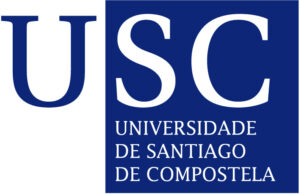Equivalent thermo-mechanical modelling of the ceramic cup of a Blast Furnace.

Specialist | María Teresa Sánchez Rúa, Centro Universitario de la Defensa (Zaragoza)
Business Coordinator | Miguel Fanjul Cuesta, R&D Engineer in the Refractory Department at ArcelorMittal.
Academic Coordinators | Peregrina Quintela Estévez, Full Professor of Applied Mathematics in Universidad de Santiago de Compostela and Director of ITMATI and Patricia Barral Rodiño, Associate Professor in Universidad de Santiago de Compostela and Affiliated researcher to ITMATI.
Description | ArcelorMittal has a multitude of Blast Furnaces. In them the primary production of steel is carried out, in other words, the hot metal (molten iron) and slag (by-product) are obtained inside them. These furnaces suffer very high temperatures and they are built with different refractory concrete materials. There are different designs. Some of them have a protective layer in the lower and inner part of the furnace, named ceramic cup, which is formed by refractory bricks and mortar joints (concrete). The development of a thermo-mechanical model of the whole ceramic cup is complex, because it requires drawing the geometry in detail greatly increasing the computational costs when meshing, and being more difficult the model convergence.
Scope | So, it is intended, in a small academic example (two bricks with a mortar joint), to study the possibility of, instead of modelling the whole assembly including mortar, being able to develop an equivalent masonry model, so that it behaves thermo-mechanically equal to the brick-mortar-brick set from the macroscopic point of view. It would be necessary to evaluate which of the following methods would be adjusted better to the real case:
- To model only the bricks, oversizing these, so that they include the dimensions of the mortar joints, imposing in the contact between the bricks an equivalent law to the mortar behaviour;
- Or, to implement an equivalent law of the whole assembly of bricks and mortar, so that it can be replaced by a material with the same dimensions as bricks and mortar and its thermo-mechanical behaviour was practically the same from the macroscopic point of view.
It would be valued the possibility of performing the simulation in a free code software (CODE ASTER) and a commercial one (ANSYS), in order to observe the differences that could appear in the results, as well as the advantages and disadvantages in the implementation when using one software or another.



